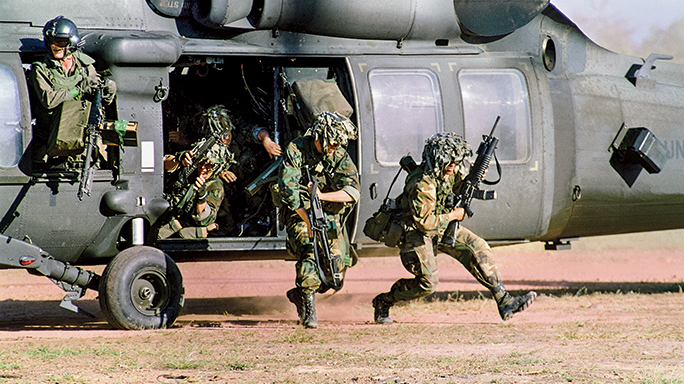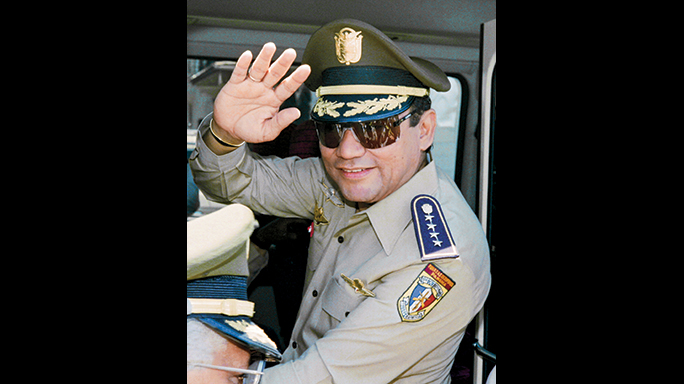The U.S. invasion of Panama in December 1989 involved more than 27,000 U.S. troops and 300 aircraft, but strategic operations by several SEALs platoons were critical to one of the war’s principal objectives: the capture of dictator Manuel Noriega.
- RELATED STORY: Panama’s ex-dictator Noriega extradited to France
The decision by the U.S. to attack Panama was reached only gradually over the course of several years. Originally a U.S. ally, Noriega had even become a paid informant for the CIA in 1967, offering intelligence on Central American insurgencies and the illegal drug trade in the region. But relations with Noriega began fraying in the mid-1980s when his involvement in drug trafficking became widely known and his disdain for the rightfully elected civilian leadership of Panama became increasingly evident. Noriega’s response to American criticism was to seek support from the Soviet Union, a step which only antagonized his former American allies even further. Finally, in 1989, when Panamanian Defense forces attacked four American military personnel and the Panamanian general assembly passed a resolution declaring that American actions had produced a “state of war” between the two nations, President George H. W. Bush ordered the execution of Operation Just Cause to remove Noriega from power.
Before the launch of hostilities, the SEALs were tasked with preventing Noriega’s escape via air or sea by destroying his personal gunboat and his Lear jet. The missions were labeled Operation Nifty Package. Noriega’s boat, the Presidente Porras, was moored in Balboa Harbor on the Panama Canal and was guarded by Panamanian forces. The SEALs approached the target by Zodiac boat, then four divers equipped with rebreathers slipped into the water, attached C4 to the hull, and escaped before the explosives destroyed the boat. This was the SEALs’ first publicly acknowledged combat swimmer mission since World War II.
Advertisement — Continue Reading Below
The second part of the mission—the destruction of Noriega’s Lear jet—was also successful, but it came at a significant cost and remains highly controversial. Three platoons of SEALs parachuted with Zodiac assault boats, weapons, and gear into Panama Bay. They reached the beach undetected and began moving toward the runway at Paitilla airfield, which was well lit with little cover. The SEALs reached the aircraft and began destroying planes, but they were quickly spotted by the Panamanian military forces, who called in reinforcements, setting off an intense firefight that left four SEALs dead and eight wounded before Noriega’s jet was destroyed with an AT4 rocket. Many military experts believe that such a large-force operation would have been better suited for the Army Rangers, and that the SEALs paid an unnecessarily heavy price for poor decision-making and poor planning.
The U.S. needed just four days to neutralize the Panamanian forces and drive Noriega into hiding. Ten days after seeking refuge in the Apostolic Nunciature of the Holy See, at the urging of the Papal Nuncio, Monsignor Jose Sebastian Laboa, Noriega surrendered to U.S. forces. He served time in prison in the U.S. and France before he was extradited to Panama in 2011, where he remains in prison for human rights violations.

























